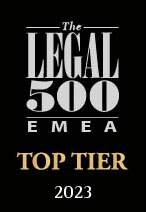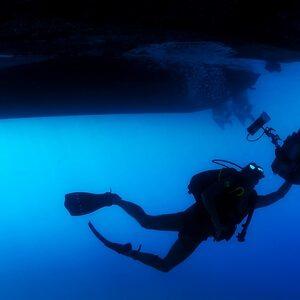This Article was first published on March 2014 Issue No. 4 of Marasi News: UAE’s Specialized Maritime Magazine
In the light of the 2004 IMO Convention for the Control and Management of Ships’ Ballast Water and Sediments (BWC), last year, the UAE National Transportation Authority issued Circular No. (5) 2013 (the Circular) calling upon the industry stakeholders to implement procedures in relation to ballast water management for the protection of the marine environment.
Background
Modern vessels use ballast water to provide stability and maneuverability by lowering its centre of mass. According to the International Maritime Organisation (IMO) the international merchant fleet carries up to twelve billion tons of ballast water around the world each year. As the ballast water usually stems from coastal waters, it carries organisms ranging from viruses to crustaceans, crabs and even fish. These species are often not germane to the environment they are released to and can cause disruptions in eco systems.
The harmful effects of unwanted species in ships’ ballast water was first reported to IMO in 1988, when Canada informed the Marine Environment Protection Committee (MEPC) about invasive aquatic species in the Great Lakes.
It has been estimated by International Maritime Organization (IMO) that international merchant shipping (57,000 vessels) carries between three and twelve billion tons of ballast water around the world each year, with invasive species causing estimated losses upward of $138 billion annually. Losses range from blocked water intakes and clogged filtration systems, loss of native fisheries and destruction of corals to diseases such as cholera.
In order to address these problems, the IMO member states adopted the BWC.
The Circular
The Circular calls upon the stakeholders to follow certain procedures:
First, in accordance with Standard D-1 of the BWC, the implementation of ROPME Resolution 59/INF.3 of the Marine Environment Protection Committee regarding ballast water exchange outside the ROPME Sea Area. Second, as per Standard D-2 of the BWC, the implementation of ballast water treatment system as envisaged by BWC. And third, that ships shall carry on board the International Ballast Water Management Certificate, the Ballast Water Management Plan, and the Ballast Water Management Book.
The Standards of the BWC
The BWC, which is not yet in force, prescribes a number of standards for Ballast Water Management to be fulfilled over time. The standards D-1 and D-2 that are covered by the Circular deal with the sufficient exchange of ballast water (D-1), and with the maximum amount of micro-organisms that may be discharged per cubic metre water (D-2) respectively.
Standard D-1
a) Vessels arriving from outside the ROPME Sea Area to undertake ballast water exchange en route in water over 200 nautical miles from the nearest land and in water at least 200 metres depth.
b) If this is not possible for safety reasons, then vessels should be expected to make minor deviations to areas within the 200 nautical miles limit that can be identified as discharge area, so long as such areas are more than 50 nautical miles from the nearest land in waters at least 200 metres depth.
c) If this is not achievable, then the ship shall provide the respective authority with reason why she has not done so, and further ballast water management measures may be required, consistent with the BWC and other international laws
Standard D-2
The implementation before 2016 of ballast water treatment systems to reduce the amount of micro-organisms discharged pursuant to Standard D-2. Such micro-organisms include, but are not limited to, Vibrio Cholerae, Escherichia Coli and Intestinal Enterococci, and their concentration shall comply with the human health standards.
Conclusion
In adopting the Circular, the National Transport Authority of the United Arab Emirates moves a significant step towards the protection of the marine environment within ROPME Sea Area, a particularly fragile area where, due to its semi-enclosed nature, the exchange of waters with the open sea may take up to four years. Shipowners and other members of the industry are therefore well advised to take water ballast management seriously and to comply with the Circular issued by the National Transport Authority.




